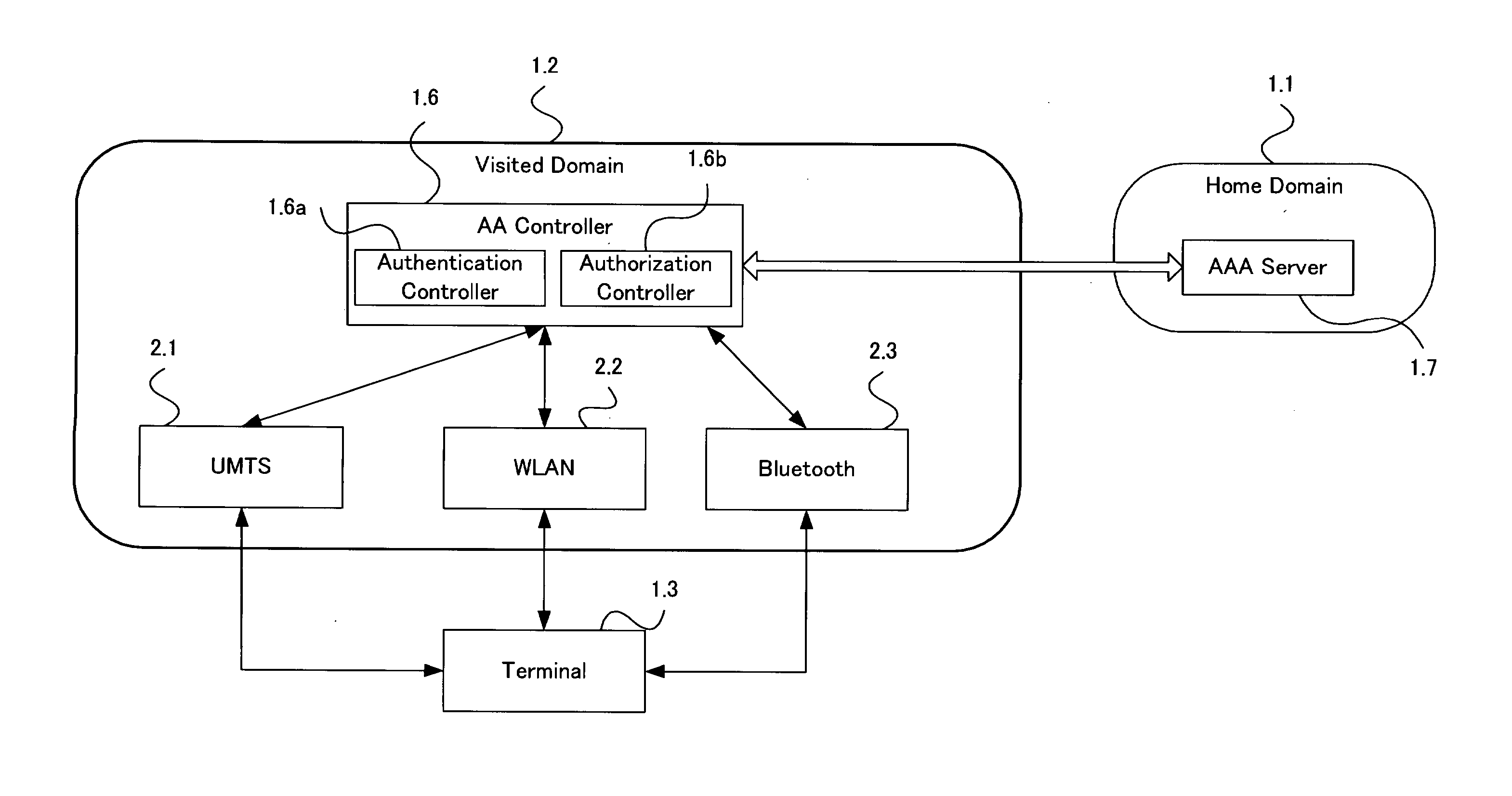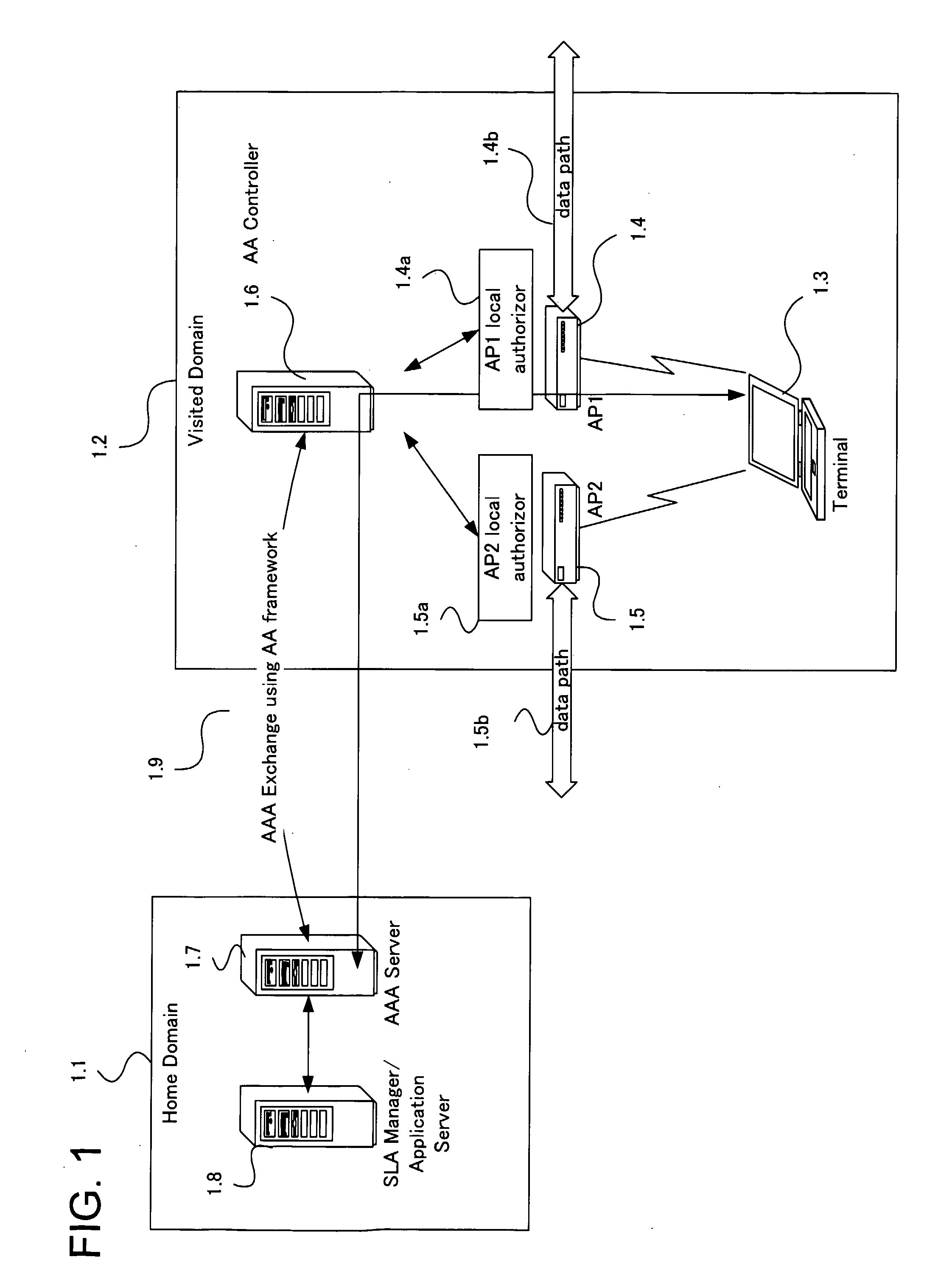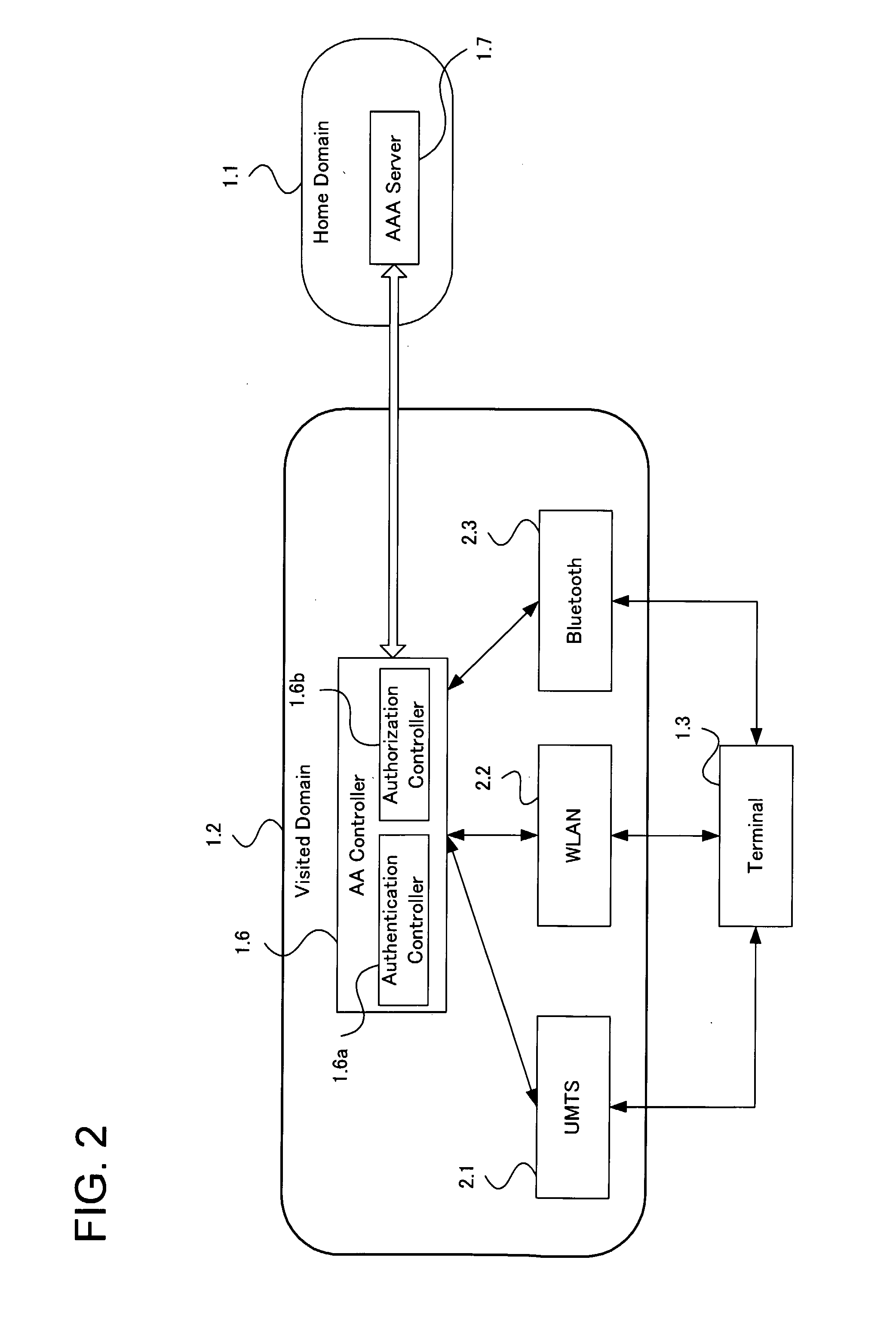System And Method For Managing User Authentication And Service Authorization To Achieve Single-Sign-On To Access Multiple Network Interfaces
a service authorization and user authentication technology, applied in the field of data communication networks, can solve the problems of not being able to address shibboleth, the support of single-sign-on for multiple network interfaces and multiple domains is still lacking, and the user is cumbersome to maintain multiple subscriptions, so as to reduce the time used for subsequent access control
- Summary
- Abstract
- Description
- Claims
- Application Information
AI Technical Summary
Benefits of technology
Problems solved by technology
Method used
Image
Examples
first embodiment
[0060]FIG. 1 shows an example embodiment of the invention that achieves global authentication in a federated network services environment. It is obvious to anyone skilled in the art that the invention could apply to any services with similar authentication architecture.
[0061] Each terminal (1.3) has a unique user identification within its Home Domain (1.1). This identification is global unique and contains the Home Domain's information. It is distributed to the user when the user associates with the domain. For example, when a user subscribes to an operator, this identification is place in the SIM / USIM card given to the user. When a user needs to authenticate himself to the Home Domain, he could use different devices, e.g. handset, laptop with a SIM reader, etc. The user could also perform simultaneous authentication using several devices. Therefore, in order to uniquely identify the user's authentication session, another authentication session identification would be generated and...
second embodiment
[0121] The subscription capability (3.3, 7.4) embedded at the return message by the AAA Server comprises the authorized interface type information and the QoS level information granted to each interface type by the AAA Server to the terminal at the Visited Domain.
[0122] The authorized interface type information contains the list of the network interface type that the terminal is authorized to use at the Visited Domain. The AAA server will only include the network interface type provided by the Visited Domain that initiates the “authentication assertion query” and the network interface type subscribed by the user. For example, for the system architecture in FIG. 2, the subscription capability information returned to Visited Domain (1.2) will include “Bluetooth, WLAN, UMTS”, although the user may also subscribe to GPRS on top of the above-mentioned three network interfaces, but this will not be known to Visited Domain (1.2). This is because Visited Domain (1.2) only provides the thre...
third embodiment
[0133] In the accessing of multiple domain services, it is possible that the user has multiple subscriptions. In this case, the user terminal would need to cater for multiple Home Domain scenarios, especially for the network sharing. For example, a WLAN hotspot could be owned by a domain federated with Home Domain 1 of the user, but it could also be shared by the Home Domain 2 of the user. Therefore, the user terminal must be able to choose which of the subscriptions to be authenticated with.
[0134] A way to solve this is for the Home Domains of the user to provide relevant information to the user as part of the subscription profile, e.g. save it to the USIM card given to the user. The user terminal would maintain a List of Home Domains. When the user terminal needs to access a network, it would obtain the domain information associated with the network, and compare it with the information in the Home Domain List. If the network is owned by one of its Home Domain, the user terminal w...
PUM
 Login to View More
Login to View More Abstract
Description
Claims
Application Information
 Login to View More
Login to View More - R&D
- Intellectual Property
- Life Sciences
- Materials
- Tech Scout
- Unparalleled Data Quality
- Higher Quality Content
- 60% Fewer Hallucinations
Browse by: Latest US Patents, China's latest patents, Technical Efficacy Thesaurus, Application Domain, Technology Topic, Popular Technical Reports.
© 2025 PatSnap. All rights reserved.Legal|Privacy policy|Modern Slavery Act Transparency Statement|Sitemap|About US| Contact US: help@patsnap.com



